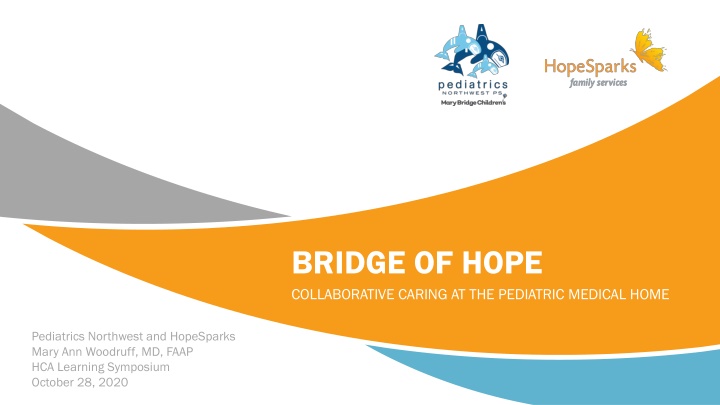
Collaborative Pediatric Mental Health Care Initiatives for Children and Adolescents
Learn about the innovative strategies employed by Pediatrics Northwest and HopeSparks to improve access to mental health care for children and adolescents in Washington state. Through a collaborative care model, they aim to address the challenge of untreated mental health disorders in young individuals by providing timely interventions and support.
Download Presentation

Please find below an Image/Link to download the presentation.
The content on the website is provided AS IS for your information and personal use only. It may not be sold, licensed, or shared on other websites without obtaining consent from the author. If you encounter any issues during the download, it is possible that the publisher has removed the file from their server.
You are allowed to download the files provided on this website for personal or commercial use, subject to the condition that they are used lawfully. All files are the property of their respective owners.
The content on the website is provided AS IS for your information and personal use only. It may not be sold, licensed, or shared on other websites without obtaining consent from the author.
E N D
Presentation Transcript
BRIDGE OF HOPE COLLABORATIVE CARING AT THE PEDIATRIC MEDICAL HOME Pediatrics Northwest and HopeSparks Mary Ann Woodruff, MD, FAAP HCA Learning Symposium October 28, 2020
OUR STORY OUR GOAL Pediatrics Northwest and HopeSparks
1 in 5 children & adolescents experience a mental health disorder annually, but 80% do not receive treatment. STATEWIDE SIGNIFICANCE Washington state ranks 43rd in the U.S. for children & adolescent s access to BH care. Less than half of children and adolescents referred for specialty behavioral health services actually see a therapist, and then many of those only go once.
DEFINING CARE PATHWAYS Implications for Social Determinants of Health Age Four to Young Adult Birth to Three
The AIMS Center THE COLLABORATIVE CARE MODEL (CoCM) Ages 4-21 years Universal mental health screening at well child visits Team approach at the medical home Evidence based care Tracking engagement and progress on a registry Collaborative Care codes
THE DATA: ACCESS From primary care referral to first contact with Behavioral Health Care Manager 5 calendar days From first contact with Behavioral Health Care Manager to first appointment 4.7 calendar days
Show improvement THE DATA: OUTCOMES Not yet improved Did not complete therapy 16% Of those in therapy: 6% 78% show improvement 2 have not yet improved 5 did not complete therapy 1 referred to specialty care 4 had SDOH stressors 78%
YOU NEVER CHANGE THINGS BY FIGHTING THE EXISTING REALITY. TO CHANGE SOMETHING, BUILD A NEW MODEL THAT MAKES THE EXISTING MODEL OBSOLETE. - R. Buckminster Fuller






















